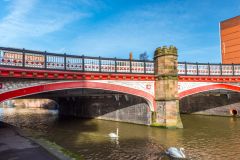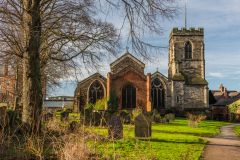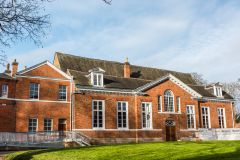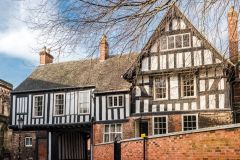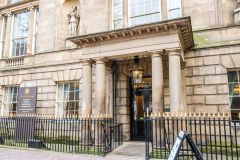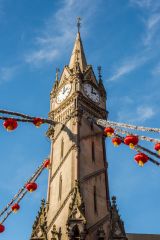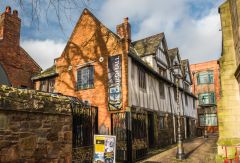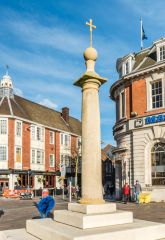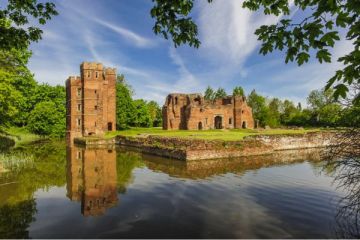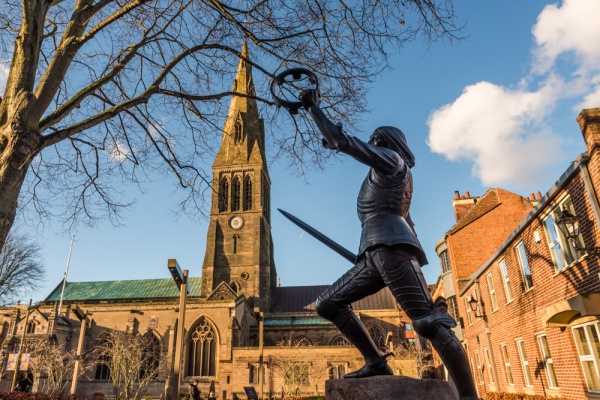
The city of Leicester rose to international prominence in recent years with the well-publicised discovery of Richard III's skeleton under a civic car park near the medieval cathedral. But the story of Leicester goes back long before King Richard met his untimely end at the Battle of Bosworth.
History
Before the coming of the Romans to Britain Leicester was an important tribal centre, with high-status buildings crowding the east bank of the River Soar. The Romans took over the native settlement and established a fortress beside the river. The city name is thought to come from the Roman 'castra', or camp, and 'Ligore', a Latinised form of Legro, an early name for the River Soar.
The best surviving feature of Roman Leicester is the Jewry Wall, one of the best-preserved pieces of Romano-British masonry in the country. The curious name has nothing to do with Jews, but came from 'jurat', a form of 'jury'.
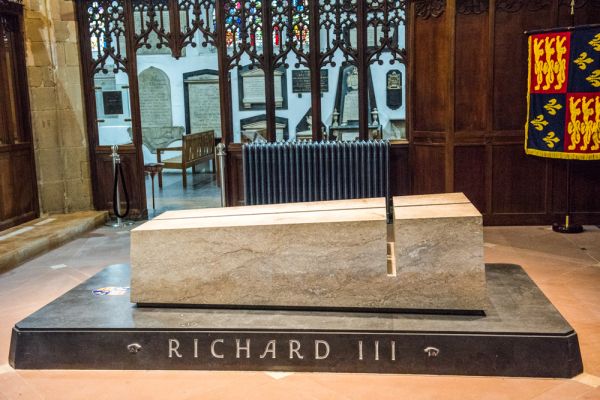
After the Romans departed in the early 5th century Leicester declined, but new Saxon settlement in the 5th and 6th centuries followed. In the 9th century, Leicester was one of five boroughs established in the Danelaw; the Viking-ruled north and east of Britain.
In the 9th century, St Nicholas Church was built using stones scavenged from the Roman forum. In the late Saxon period, Leicester was an important trading centre, large enough to support six churches. Shortly after the Norman Conquest of 1066, William the Conqueror ordered a castle built to ensure the city's obedience to Norman rule.
Leicester Abbey and friary followed, and the city grew to support over 4,000 inhabitants by the 14th century. Several important medieval buildings remain, including the timber-framed Guildhall, the Newarke Gateway, (c. 1400) and Wygston's House, built around 1490.
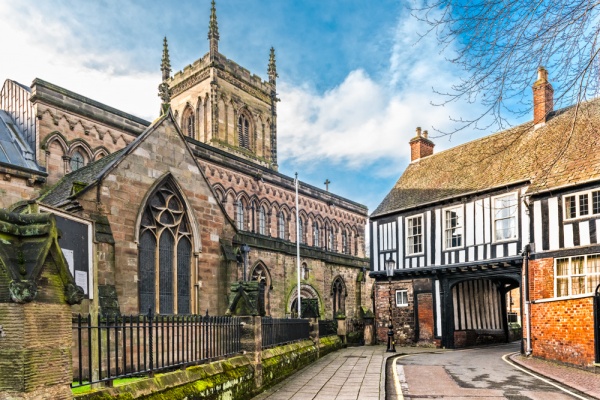
The King in the Car Park
In 1485 Richard III stayed at Leicester on his way to do battle with Henry Tudor at Bosworth. According to legend, the king struck his spur on a projecting stone as he crossed Bow Bridge. A wisewoman foretold that 'where his spur struck, his head should be broken'. Sure enough, when Richard's body was brought back to Leicester after his death at Bosworth, hanging over his horse's side, his head struck the same stone and his skull was broken.
Whether there was any truth in the legend is doubtful, but what is not in doubt is the remarkable story of how Richard's body was lost for centuries, buried in the ruins of Greyfriar's, until it was found under a civic car park. The Richard III Centre stands on the site, and you can see where the king's body was found and view a reconstruction of his skull.
Richard was reburied with full honours in Leicester Cathedral, a stone's throw from where his body was found. The cathedral began as a simple parish church, dedicated to St Martin, and was only raised to cathedral status in the 1920s.
Richard III is not the only famous person whose death is linked to Leicester. In 1530 Cardinal Wolsey died at Leicester on his way to trial for treason by Henry VIII. The once-powerful Cardinal's body was buried at Leicester Abbey, where a memorial now stands within the abbey ruins.
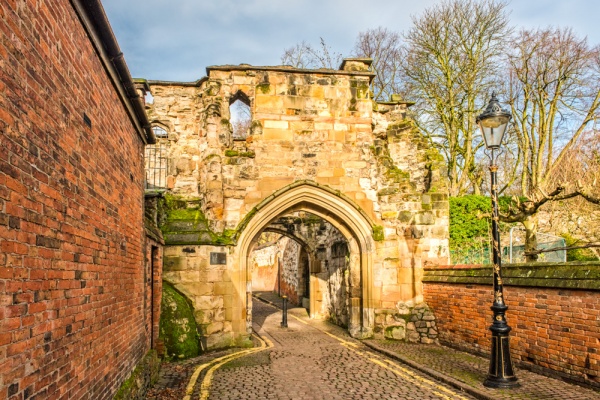
Leicester supported Parliament in the Civil War, and as a result King Charles ordered a siege of the city in 1645. The medieval defences could not hold, and Leicester was quickly overcome. The Royalist triumph was short-lived, however, for the king's forces lost the Battle of Naseby to Oliver Cromwell just a few days later.
Leicester was now attacked by Parliament, and once again resistance was quickly overcome, but not before Skeffington House, now part of Newarke Houses Museum, was damaged. The medieval Newarke Gateway was used to store ammunition and arms during the conflict, and ever since the gateway has been known as The Magazine.
During the 17th century, Leicester became known as a centre for making stockings. Industrialisation turned the cottage industry into a burgeoning woollen trade, and Leicester's skyline was a sea of factory chimneys. The industrial economy swelled the population to over 200,000 by the late Victorian period. The coming of the railway helped trade grow, but it also gave the working classes an opportunity to get away, and seaside holidays became popular.
The first entrepreneur to take advantage of the new mobility was Thomas Cook, who organised train excursions from Leicester and Loughborough. You can follow a Thomas Cook trail around the city, passing places linked to the famous tour operator.
Leicester officially became a city in 1912, and in 1927 the medieval church of St Martin was raised to cathedral status. Though growth slowed between the wars, the population was swelled again when Leicester became a destination for Jewish immigrants from Eastern Europe. More recently Leicester has become a destination for settlers from the Caribbean and Uganda, as well as the Indian sub-continent.
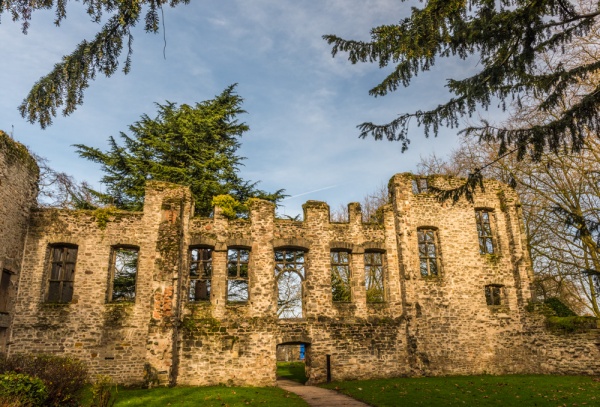
What to See
We've mentioned a few of the major historic attractions already, from the Richard III Centre to the cathedral where the king is buried, and Leicester Abbey, where the grave of Cardinal Wolsey lies undiscovered. Directly beside the cathedral is the Guildhall, built around 1350. Within the timber-framed walls is a very well-preserved medieval council chamber and library.
A short walk from the cathedral is the medieval church of St Mary de Castro, standing close to the medieval castle mound. Geoffrey Chaucer was married here in 1360, and Henry VI was knighted here in 1426 at the age of just five.
Near the castle is the Newarke Houses Museum, partly housed in the early 16th century Chantry House, one of the oldest buildings in Leicester. Across from the museum is The Magazine, built around 1400 as a gateway to The Newarke area of Leicester. A short walk from The Magazine is the New Walk Museum, housed in an ornately decorated Georgian and Victorian mansion.
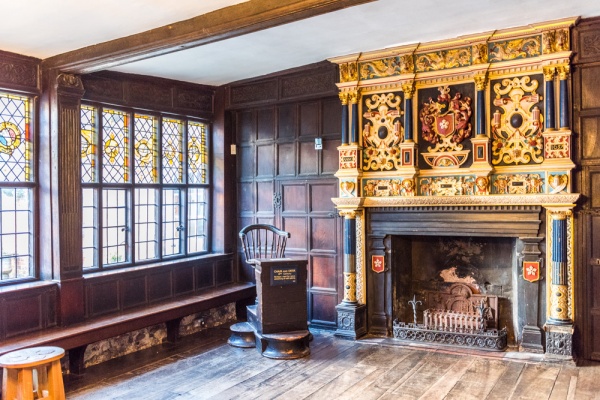
To the north of the historic city centre is the Abbey Pumping Station, a beautiful example of Victorian engineering built in 1891 to handle Leicester's sewage treatment. Within the Pumping Station is the Beam Engine House, where you can see four restored steam-powered beam engines at work.
Near the Pumping Station is Belgrave Hall, an elegant 18th-century mansion set in beautiful gardens. The Hall was built from 1709 by a wealthy hosiery merchant. The gardens are open on summer weekends and the house itself is open for special events and pre-booked tours.
There is so much to see in the historic core of Leicester, and most of it can be easily reached on foot. If you fancy going a bit further afield the moated medieval castle of Kirby Muxloe is one of the earliest brick buildings in England.
About Leicester
Address: Leicester,
Leicestershire,
England
Attraction Type: Town
Location: Easy access off the M1 at Junction 21. Numerous paid parking areas around the city centre. There is also a park and ride service with three stations.
Website: Leicester
Location map
OS: SK584050
Photo Credit: David Ross and Britain Express
HERITAGE
 We've 'tagged' this attraction information to help you find related historic attractions and learn more about major time periods mentioned.
We've 'tagged' this attraction information to help you find related historic attractions and learn more about major time periods mentioned.
Find other attractions tagged with:
NEARBY HISTORIC ATTRACTIONS
Heritage Rated from 1- 5 (low to exceptional) on historic interest
Leicester, St Margaret's Church - 0.1 miles (Historic Church) ![]()
Leicester, All Saints Church - 0.2 miles (Historic Church) ![]()
Leicester Clock Tower - 0.3 miles (Historic Building) ![]()
Leicester High Cross - 0.3 miles (Historic Building) ![]()
Leicester Guildhall - 0.3 miles (Museum) ![]()
Leicester Cathedral - 0.3 miles (Cathedral) ![]()
Leicester, St Nicholas Church - 0.4 miles (Historic Church) ![]()
Wygston's House - 0.4 miles (Historic Building) ![]()
Nearest Holiday Cottages to Leicester:
East Norton, Leicestershire
Sleeps: 4
Stay from: £423 - 1672
More self catering near Leicester
